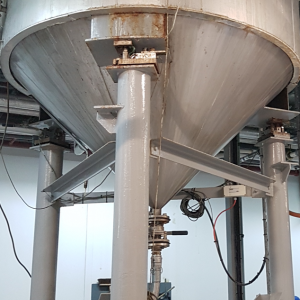 You may be tempted to assume that load cell mounting process vessels always makes raw material additions more reliable. However, you need to consider the following:
You may be tempted to assume that load cell mounting process vessels always makes raw material additions more reliable. However, you need to consider the following:
- Mass of the process vessel, compared to the mass of the contents. If the vessel is light, compared to the weight of the contents, the accuracy should be very good. However, accuracy is reduced if the vessel is as heavy as the contents, which is often the case with grease manufacturing kettles, where the mixer drive system is large and powerful. In grease manufacture, that could be livable with, unless you make a half size batch, in which case, the accuracy percentage is halved.
- The kettle discharge pipework will need a flexible connection to prevent the weight of the product pump and everything it is connected to affecting the load cells. Likewise, incoming pipework will need to be isolated, either by using flexible couplings or by having a small gap between the pipe walls and the vessel inlet ports.
- If you add too much raw material – it’s too late! With separate scales, you can always remove excess raw material from a bucket on a set of scales. However, if you’ve already added it into the vessel directly – you cannot remove the excess from the batch.
- Be careful about leaning on the vessel or placing anything on top. If you do that during a pump addition, the feed pump could stop prematurely.
If you address the issues above, load cell mounting process vessels brings great benefits.
